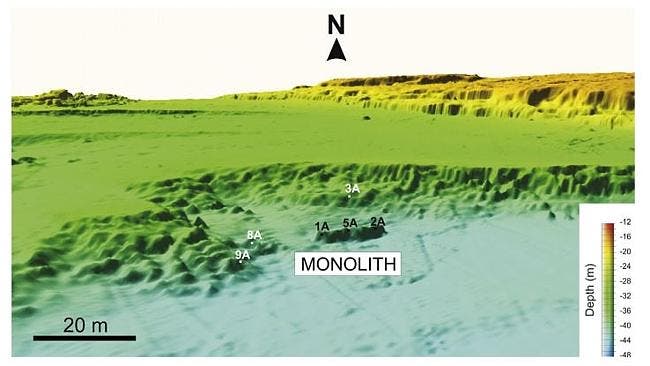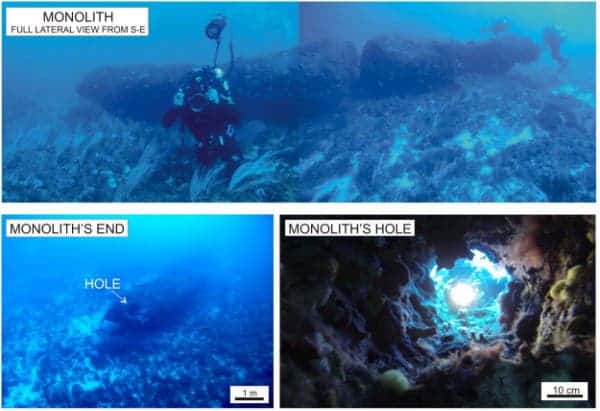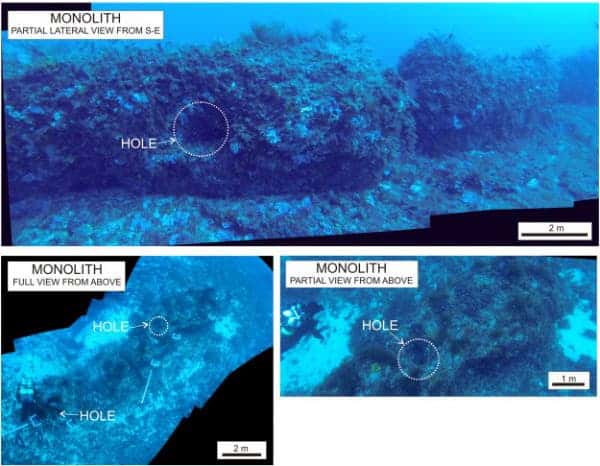Zvi Ben-Avraham of Tel Aviv University and Emanuele Lodolo of the National Institute of Oceanography and Experimental Geophysics in Trieste, have discovered a monolith in deep water, resting on a spot that was once an island off the coast of Sicily. Their study has been published in the Journal of Archeological Science.

3-D perspective view of the high-resolution bathymetric map where the monolith has been discovered. No vertical exaggeration. Numbers indicate the locations of the corresponding rock samples.
Image source Journal of Archeological Science, supplied.
The 12-metre high, limestone monolithic structure is believed to have been carved by stone-age men some nine millennia ago. This enormous stone totem was cut using primitive tools from a rocky outcrop found a few hundred meters away from its current position in an age when the Mediterranean Sea was still a dry basin.
“It was cut and extracted as a single stone from the outer rectilinear ridge situated about 300 to the south, and then transported and possibly erected,” the study reads. ”From the size of the monolith, we may presume that it weighs about 15 tons.”
The bloc now rests, split in two, on the bed of the Mediterranean Sea in the Sicilian Channel -between Tunisia and Sicily- under 40 meters of water.
The area was submerged about 9350 years ago (give or take 200 years) when the last Ice Age retreated. Before that time the area was believed to be something of an archipelago, with a string of islands linking Europe to North Africa via a shallow sea.
The most striking feature the carvers cut into the stone are three deep holes. Two of these are on the sides of the stone, the third passes through the stone at one end.
“There are no reasonable known natural processes that may produce these elements,” the team wrote in the Journal of Archaeological Science.
Archeologists believe that the monolith had a practical, rater than religious use to the community. The island it was created on, Pantelleria Vecchia Bank, housed a thriving people that traded by sea and fished, before it was swallowed up by the Mediterranean.
“Most likely the structure was functional to the settlement. These people were used to fishing and trading with the neighboring islands. It could have been some sort of a lighthouse or an anchoring system, for example,” Lodolo said.
Manufacturing, moving and erecting a monolith of such size required careful cutting work, extraction techniques and transportation. Such skills had not been previously associated with such an ancient people, the study says.
“The discovery of the submerged site in the Sicilian Channel may significantly expand our knowledge of the earliest civilisations in the Mediterranean basin and our views on technological innovation and development achieved by the Mesolithic inhabitants.”











